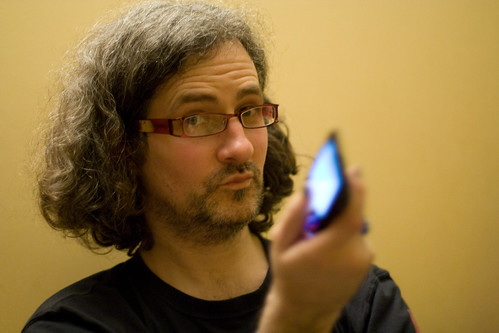 Finally… part 3! The timing is prescient for two reasons. Firstly, last Monday I was invited to be a panelist at a discussion hosted by Mobile Mondays (MoMo) on the whole area of Mobile tech and Social Media.
Finally… part 3! The timing is prescient for two reasons. Firstly, last Monday I was invited to be a panelist at a discussion hosted by Mobile Mondays (MoMo) on the whole area of Mobile tech and Social Media.
Secondly, it’s because today I’m heading to Leicester to De Montfort University Business School to help put together a social media toolkit that small businesses can use. (In case you’d let it slip your mind, being a pro or semi-pro musician IS a small business – makes for a great case study, in fact…)
So, cutting to the chase, our two Sesame Street-esque words of the day are:
‘Mobile‘ and ‘Transparent‘.
As I said to the lovely suits at MoMo, one of the big problems for non-uber-geeks using mobile social tools at the moment is the lack of transparent interface.
What the hell does that mean? OK, if you take a picture, click a button and quietly in the background it then uploads to Flickr for you (or to Facebook, Ovi, or if you want to post it to lots of places at once, Phreadz), that’s transparent. If, however, you take a picture, scroll through 100 menus, click a button, tell it to upload and then have to watch the screen for 5 mins because the connection keeps dropping and your phone might crash… that’s what I like to call ‘Not Transparent‘. That’s a pain in the arse, and unless you have a dedicated Social Media monitor (like a library monitor in school, but with cooler toys), it makes it very difficult to be spontaneous.
And spontaneity is key to the value of mobile for a musician. If you’re touring, all kinds of fun and crazy things are happening all the time. Lots of them (the ones that aren’t borderline illegal), when photographed, filmed or recorded, have enormous shareability. They’re funny, engaging, interesting and easily become part of the narrative. Even more importantly, they are something free you can GIVE to your audience, expecting nothing in return. You’re just inviting them into your world, to see a glimpse of the life you live on the road. Or in the studio, out shopping for music gear, or – if you’re comfortable with it – bits of your day to day life.
So where are we up to with the tech? Well, it is, not surprisingly, getting better and better. Hardware-wise, the front-runners are the Nokia N95 (my own smartphone of choice) and the iPhone… I’m not a huge fan of the iPhone, but I do appreciate the feature set it has, and it is a great device for playing around with mobile social media.
My reason for loving the N95 is that it’s as close to an all-in-one tool as I’ve seen yet. The camera – and more importantly, the video capture – is the best I’ve come across in a mobile phone (even the world’s biggest cynic about such things, PhotoMonkeySteve, was impressed by the quality…). It has wifi, 3G and a whole slew of great apps developed for it. It’s a pretty good media playback device (if you rip films in the right format, you can even use it as a portable DVR, hook it up to your TV and watch films on the big screen…)
For me, being able to record gigs (I’ve currently got about 3.5 hours of Lobelia and I playing house concerts on the phone, waiting to be edited and uploaded to YouTube…) stream little bits of my daily life and upload photos direct to flickr (or, using TwitPic, to Twitter) is really cool. I can even blog direct to this WordPress blog from the phone.
The connection your audience will feel with what you’re doing is multiplied by a pretty large factor when you talk to them ‘in the moment’ – not ‘last night I played a gig’, but ‘I’m about to go on stage, wish me luck!’ – I posted that very message on Twitter last night before I played with Lawson/Dodds/Wood and got LOADS of replies from people who wouldn’t drop in to say ‘hey, really glad you had a good gig’ on my blog, but feel all warm and snuggly, and again, importantly, ‘like they’re missing something’ because I tell them what I’m doing right then.
So here’s what you need to get going with your Mobile social media life:
- A Nokia N95 (or N82, or iPhone, or any other smartphone that has the features listed above)
- A twitter account (twittering on the go makes bus and train journeys so much more fun. Most of the members of Jars Of Clay are now on Twitter, and their tour-banter is a lovely glimpse of life on the road)
- A flickr account (you should have one of these already – I’ll post more about flickr soon…)
- A youtube account (be warned, if you get an iPhone, the current version does NOT do video. I know, it’s insane, why the hell not?) – you can upload directly to your youtube account from the Nokia N series phones, via the youtube app. Same goes for Seesmic and Phreadz.
You can also post to Facebook, Myspace and a raft of other social sites from your phone.
Bottom line, you can double your social media footprint and quadruple your connection with your audience by going Mobile.
What’s more, it’s only going to get better from here. Be warned, a few of these things have a bit of a learning curve attached, mainly to get round the foibles of the hardware and software (by far the best feature-set of the upload apps is ShoZu… it’s just a shame that it makes my phone impossible to use when it’s running… I met the VP of Marketing at Shozu at MoMo, so will report back on my communication with her soon – she’s eager to help…)
4 years from now, social networking is going to be predominantly mobile and very much driven by rich media (photos, videos, audio) – get in there now and you’ll have a bigger slice of the audience, have made all your mistakes while most people don’t even know what you’re doing, and be in a position to innovate as soon as the tech comes along that lets you do it.
So, off you go and upgrade your phone (just don’t forget to recycle the old one…)
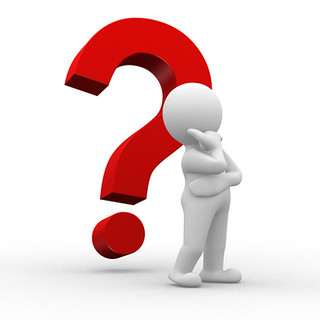 Something interesting happened on my Facebook page recently. Apropos of not much, I asked a couple of questions about the music people listen to – ‘favourite sounding records‘, ‘records you didn’t like at first, but grew to love‘ – that sort of thing. I did it largely because I found I was missing the kind of chats about music that used to happen on my forum. I intentionally shut down the forum a coupla years ago and suggested the posters there move over to Twitter, when it became apparent that a more open forum for conversation would result in better things to talk about for all of us. But Twitter is a short-form medium, and sometimes, threaded longer conversations can yield some really good stuff that won’t fit in the constraints of Twitter.
Something interesting happened on my Facebook page recently. Apropos of not much, I asked a couple of questions about the music people listen to – ‘favourite sounding records‘, ‘records you didn’t like at first, but grew to love‘ – that sort of thing. I did it largely because I found I was missing the kind of chats about music that used to happen on my forum. I intentionally shut down the forum a coupla years ago and suggested the posters there move over to Twitter, when it became apparent that a more open forum for conversation would result in better things to talk about for all of us. But Twitter is a short-form medium, and sometimes, threaded longer conversations can yield some really good stuff that won’t fit in the constraints of Twitter.


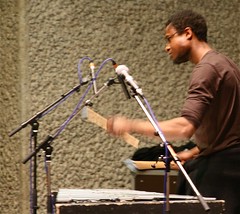
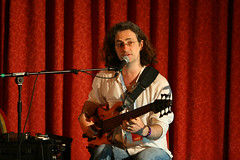
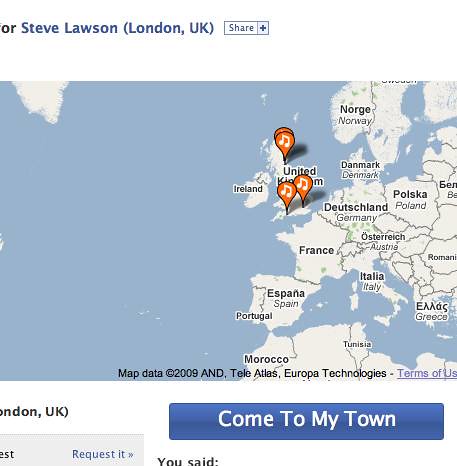
 So, as I
So, as I 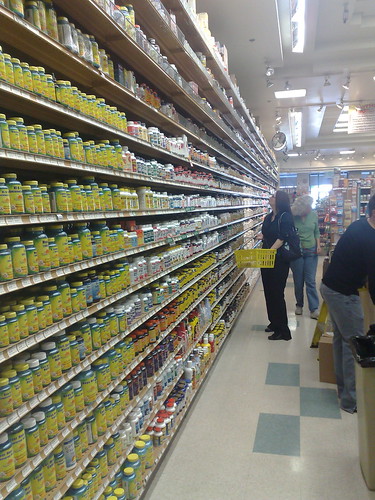 So, context: I’m on
So, context: I’m on  Finally… part 3! The timing is prescient for two reasons. Firstly, last Monday I was invited to be a panelist at a discussion hosted by
Finally… part 3! The timing is prescient for two reasons. Firstly, last Monday I was invited to be a panelist at a discussion hosted by